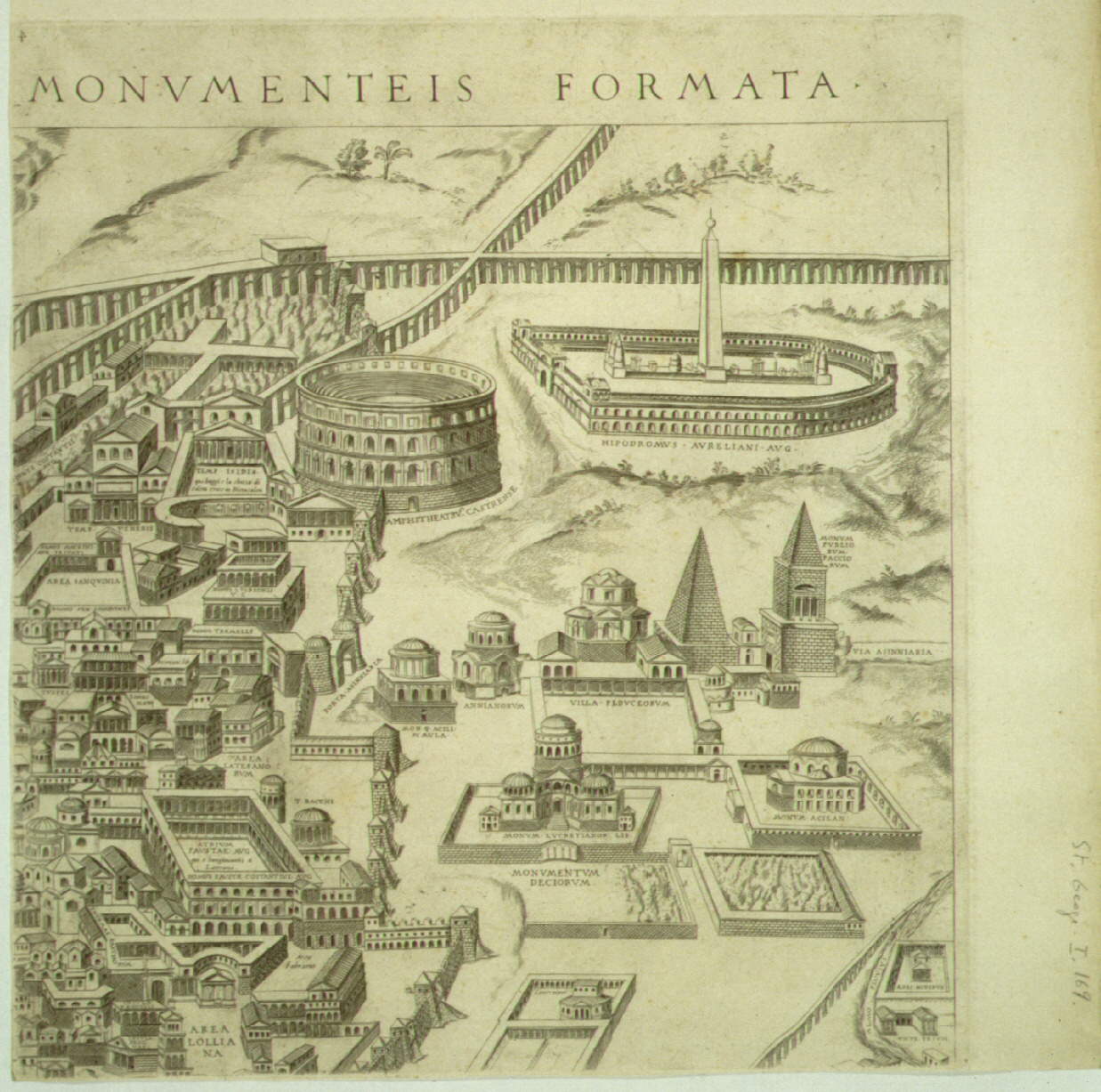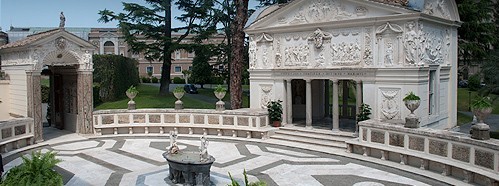Architect, painter, landscaper, and antiquarian Pirro Ligorio died on 26 October 1583. He was born in Naples between 1512 and 1513 from a patrician family. Little is known about his early formation. His contemporary Giorgio Vasari did not include an account of Ligorio in his Lives, most likely because of professional rivalry. What we know is based on Giovanni Baglione’s Lives, published in 1642. According to Baglione, in 1534 Ligorio was in Rome to work as a painter. In the Eternal City the artist developed his interest in classical antiquities. Later, he worked on two very detailed encyclopedias of classical artifacts, which he was never able to publish because of their massive size. He did publish a series of maps, including his famous map of ancient Rome (Antiquae Urbis Imago), in 1561.
In 1549 Ligorio became archeologist for Cardinal Ippolito II d’Este. From then on, his work was characterized by a more strict intellectual approach. For the cardinal, Ligorio devised the iconographic program for the gardens of Villa d’Este at Tivoli, greatly influenced by the nearby Villa Adriana.
Ligorio then moved to the papal court in 1558. For pope Pius IV he designed the Casina Pio IV in the Vatican gardens, considered one of his masterworks. In 1564 Ligorio was appointed chief architect of St. Peter’s. However, his fortune declined with the next pope, Pius V (1566-1572) who, disapproving the artist’s passion for classical antiquity, dismissed him.
In 1568 Ligorio accepted the offer of a post as Ducal Antiquary at the court of Alfonso II d’Este in Ferrara. Following the 1570 earthquake that devastated the city, he conducted a series of engineering studies, with a striking modern approach.
Reference: “Ligorio, Pirro”, Dizionario Biografico degli Italiani, vol. 65 (2005).
Further reading: David R. Coffin, Pirro Ligorio. The Renaissance Artist, Architect, and Antiquarian, University Park, PA, 2004.
Antiquae Imago Urbis (detail), Lossi reprint, 1773.
Sketches after the Antique: Bacchic Revels; Neptune in His Chariot, c. 1535, Black chalk, with pen and brown ink, on ivory laid paper, laid down on cream laid paper, Art Institute, Chicago.
Villa d’Este – photo of the author.
Casina Pio IV, 1558-1561, Vatican City.




